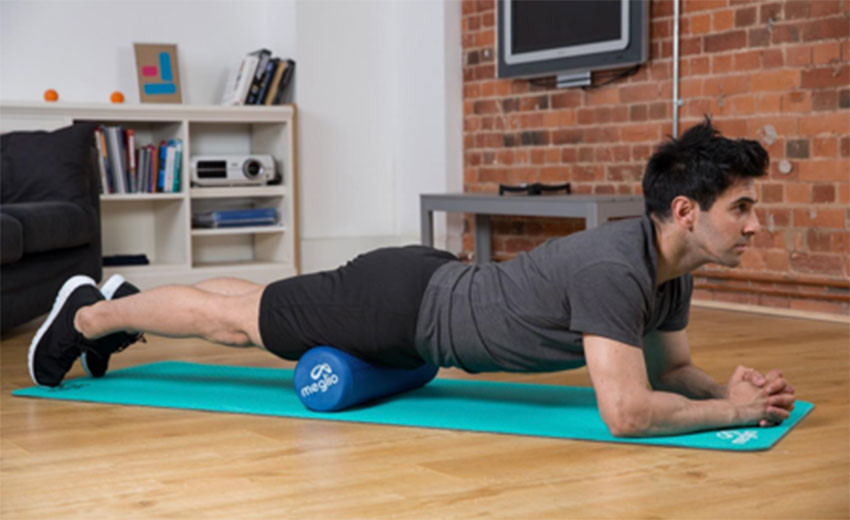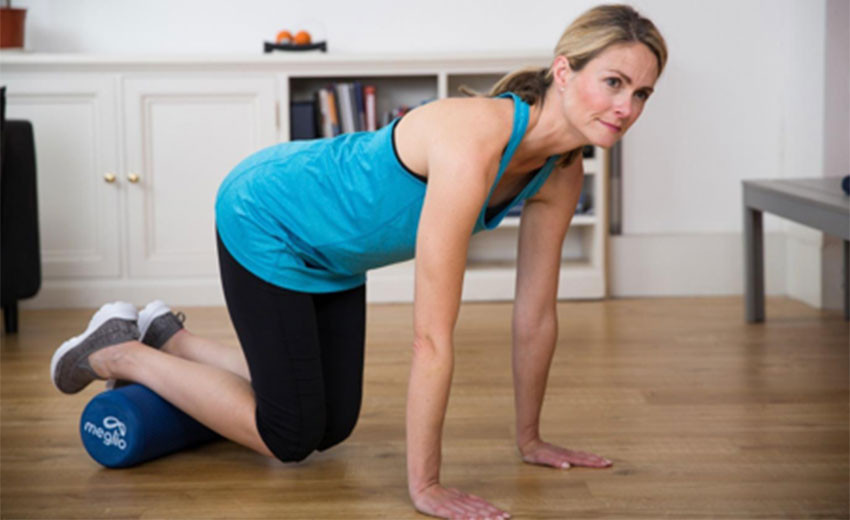Lower your risk of injury, reduce muscle soreness and increase your performance
As most runners will know, training harder and longer comes with risks. If you want to carry on running without suffering from injuries as well as increase your recovery and performance, you need to incorporate foam rolling into your training. To find out how, we’ve asked Meglio physiotherapy and fitness expert, Laurence Plant for some much needed advice.
Foam rolling has seen widespread use over the last few years with, and for good reason. Unfortunately, for the large majority, foam rolling tends to fall under the same category as stretching. It’s one of those things we always plan to do if we have spare time in the day, but in reality, it never gets given the required time and attention.
- To view Meglio’s range of foam rollers click here
Just like stretching, foam rolling is vital to help increase blood flow and relax tight muscles after a run or gym session. Great for tackling problematic areas such as your hips, calves, hamstrings, back, quads and IT band, foam rollers can be used on almost any part of your body to aid flexibility, release knots and tight spots.
A fantastic, cost-effective tool for reducing muscular aches and pains, foam rollers are an essential piece of equipment for any runner, whether experienced or beginner. It can feel uncomfortable when you first begin using a foam roller, but stick with it and, after a few weeks, the pain will start to ease up. Then you can start to focus on self-identifying the more tender areas within your muscles.
About the Expert
Laurence Plant is an experienced professional chiropractor and sports movement analyst. As well as being the Meglio physiotherapy and fitness expert, he’s also a specialist chiropractor and clinic manager at Henley Practice
What are the benefits of foam rolling for runners?
Incorporated into your normal cool-down routine after a run or just added into your normal day, foam rollers are a fantastic and inexpensive piece of equipment that offers a variety of applications. Spending just 5-10 minutes a day foam rolling is a great way to boost your recovery and prevent injuries. benefits include:
Improved circulation – to help the body to recover faster after a run
Break down knots and tight spots – to increases range of motion
Stimulate blood flow – so more oxygen is delivered to the sore muscles
Top tips before you start:
- It’s important to relax into your exercises, with slow and deliberate movements.
- There is no set time or rep range with foam rolling. Your goal is to release tight muscles, increase flexibility, and promote muscle recovery.
- A bit of pain to begin with is normal. Stick with it however and after a few sessions and the discomfort will reduce.
- Aim to breathe normally. Don’t hold your breath.
- Just a few minutes each day goes a long way to improving your overall recovery.
Ready to roll? Here we run through a few great moves to get you started.
Calf roll

Target Muscles: Calf muscles
Why do it: Ideal for tackling muscle tension after a run or gym session, foam rolling your calf muscles can relieve those annoying aches and pains. Especially useful for runners and anyone suffering from a calf strain or Achilles pain after exercise.
How to do it: Sit down on the floor (Or yoga mat) and extend your legs straight out. Place a foam roller underneath your calves and your hands on the floor for support. Slowly begin to roll your calf muscles by pressing your body weight into your calves and supporting yourself on your hands with your bum off the floor. Make sure you start and end right before the back of your knee. You can modify the intensity of the calf roll by crossing one leg over and placing it on top of the other leg.
Number of repetitions: Roll smoothly up and down for 2-3 minutes
Quad/thigh rolling
Target Muscles: Quadriceps
Why do it: Tight quadriceps are a common issue for runners. Your quads play a vital role in everyday life, from carrying your body forward as we walk, to helping us get upstairs and hills. If you’ve recently increased your running speed and/or distance or started hill running, your body will take time to adapt to the enhanced demand and stress placed onto it.
How to do it: Place the foam roller on the ground and lie face down. Place both legs onto the foam roller and your elbows on the floor in front of you for support. Use a sweeping motion to roll your quads over the roller. In order to target all aspects of your quadriceps, angle your body slightly and begin to roll again.

You want to roll the edge of your thigh, the middle and the inside. When you find a tender area, slowly oscillate back and forth to massage and release the affected muscle. Be careful not to roll over your knees and hips joints.
Tip: As your quads are a large muscle group, angle your body on the foam roller in order to massage the inner and outer aspects.
Number of repetitions: Roll smoothly up and down for 2-3 minutes
Shin roll
Target muscles: Shins (shin splints)
Why do it: Shin splints are a common overuse injury. They often occur after running or performing high impact activities for extended periods of time. A foam roller can help to reduce inflammation and lessen the pain of shin splints by increasing blood flow around the affected area.

How to do it: Start on all fours with your wrists below your shoulders. Your hands and knees are shoulder-width apart. Place a foam roller underneath your shins and lift your knees off the ground by pressing your hands into the floor.
Use your feet and hands to roll back and forth. Point your toes slightly inwards and roll back down on your shin. Return to starting position and repeat.
Number of repetitions: Roll smoothly up and down for 2-3 minutes
Iliotibial band roll
Target muscles: IT Band fascia roll (Iliotibial Band)
Why do it: The IT Band (Iliotibial Band) is often referred to as the bane of a runner’s life. The pain is often caused due to friction against the outer edge of the knee joint, usually due to an overly active TFL, compensating for a lack of exercise in your gluteal muscles. A foam roller can help to reduce the muscular pain and ease the tension after exercise.

How to do it: Lie on one side with the foam roller just below your hip bone. With one leg extended straight out, bend your opposite knee and place it in front of your leg with your foot on the floor. For extra support, place your hand on the ground.
Slowly roll your outer thigh from the hips, to just above your knee. Roll back and forth in a sweeping motion. Switch to your opposite leg and repeat.
Number of repetitions: Roll smoothly up and down for 2-3 minutes per leg
Glute roll
Target muscles: Glutes
Why do it: Your glutes can be a tricky muscle group to warm up and activate. Often a neglected area of the body, glute pain can occur due to prolonged periods of sitting. Tight glutes can trigger pain across the rest of your body including your hips, back and knees. It’s vital to release the trigger points, allowing you to continue running at your optimum level.

How to do it: To begin, sit with one leg crossed over the other whilst placing yourself directly on top of the foam roller. Place your hands face down on the floor to provide support and cross your right ankle over your left knee. Gently begin to roll back and forth across your glutes.
You can adjust the area of massage by moving your body weight just a few inches. Switch to the other leg and continue. Focus on identifying the tender areas known as trigger points and work more on those areas.
Number of repetitions: Roll smoothly up and down for 2-3 minutes per side
How often should I foam roll?
Start using a foam roller whilst watching TV or before getting ready for bed to make it feel like less of a chore. Aim to foam roll daily for at least 5-10 minutes as part of your regular recovery programme and say goodbye to your muscular aches and pains.
Meglio’s range of foam rollers include the High Density Foam Roller (£13.49 and the Grid Foam Roller (£9.99).





